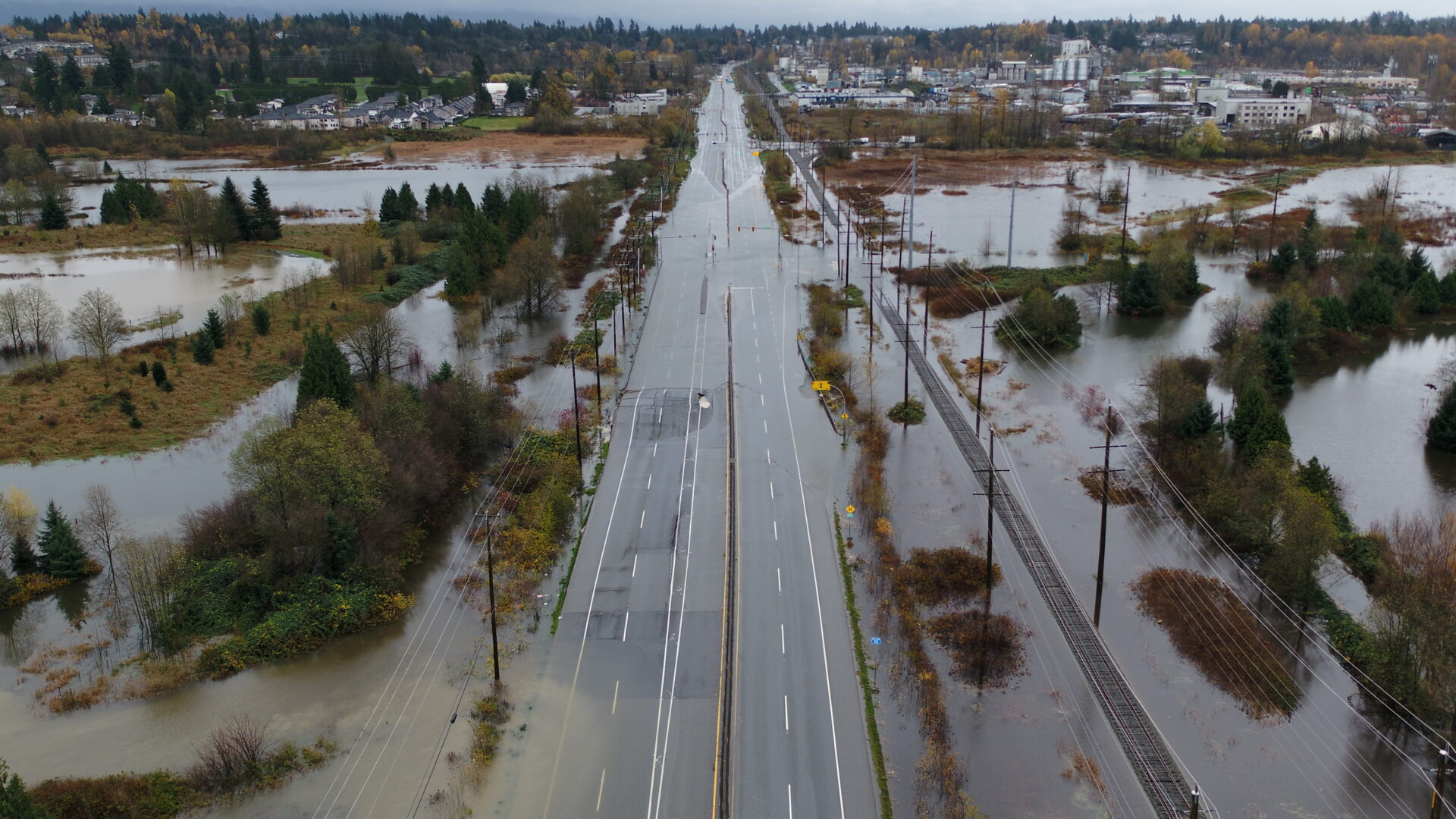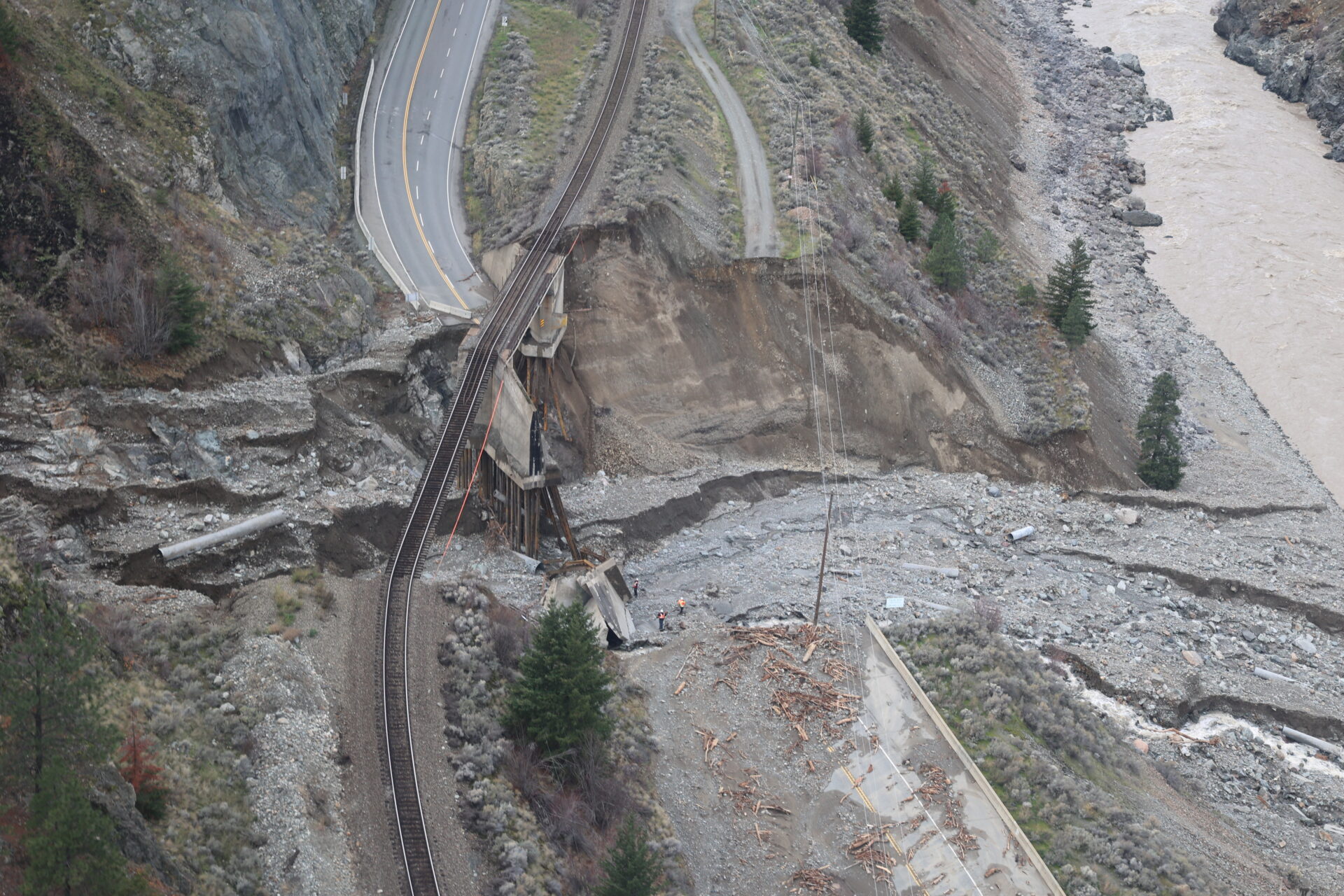The Storm
On Nov. 13, an atmospheric river descended on BC’s south coast and the southwest interior. There were warnings that it was coming, but few expected such ferocity. Was it the biggest storm ever? We don’t know, but it was big enough to cause billions of dollars of damage in a few days, prompting a provincial state of emergency declaration, gasoline rationing and heartwarming Good Samaritan responses in the most affected areas.
Advertisement

Fortunately, it did not encompass the entire province. The storm course followed a diagonal track across the southern half of Vancouver Island, through the lower mainland and Fraser Valley, up the Fraser River, including adjacent mountainous terrain, all the way to Kamloops. For a time, landslides, road closures, flooding and bridge failures cut Greater Vancouver off from the rest of BC. Rainfall totals between 100 and 200 millimetres accumulated in just hours, followed by winds that reached nearly 100 kilometres an hour in some areas.
The havoc created by the storm, along with the response of citizens helping out those in need, dominated the news headlines. Missing from most early news coverage was the potential damage done to salmon runs, many that had just finished or were still actively spawning.
Advertisement
Raging rivers scour gravel beds, alter stream courses and dump enormous quantities of silt over river and riparian habitats. Newly deposited eggs may not be the only casualties. No one knows what’s actually happened to overwintering juvenile salmon, to resident trout and to overall stream ecologies.

Damage Assessment & Solutions
Five highly qualified people contributed their thoughts on this disastrous flood. Their opinions vary somewhat but provide a credible analysis of potential long-term consequences. They also offered solutions to mitigate these destructive impacts, should flood events increase and intensify.
Advertisement
Ian Bruce heads up Peninsula Streams. He is a registered professional biologist with a degree in natural systems restoration. For over two decades, he’s led the organization’s volunteers in tackling urban stream projects around the Saanich Peninsula and Victoria.
Ian provided these observations:
- Streams with natural areas for flood water dispersal will do better than channelized water courses.
- Impact differentials between small and large streams also depend on stream gradients.
- It’s too early to assess damage. The first indication will be spring fry counts.
- Government money should be earmarked for floodplain redesign and new solutions to slow storm water runoff, including situating playing fields, parks and golf courses near streams as collection areas, integrating rain gardens in community planning, relocating at-risk structures and developing a plan B for agriculture.
- Hatcheries can maintain stocks where impacts are repetitively severe. Use gene banking and employ better hatchery practices. The science is there.
Bob Crandall is a qualified environmental professional, as well as the president of the Cowichan Lake Salmonid Enhancement Society (CLSES). They run a small hatchery, conduct summer fry salvage and stream restoration, all while supporting school salmon programs. Here are his thoughts:
- The Cowichan is a significant lake-river complex with many tributary streams.
- Even with lake outlet flow control, Bob believes the Cowichan main stem suffered significant damage.
- Key tributaries feeding into Cowichan Lake could fair better because riparian zones and flood plains remain intact.
- Spawning salmon are still coming up river.
- Volunteers continue to collect brood stock.
- Beneficial Cowichan River side channel restoration has already been done by the Ministry of Transportation’s Sean Wong. This should reduce impacts.
- The CLSES hatchery and the Cowichan Tribes facility further downstream provide insurance against catastrophic spawning losses.
Peter McCully is professional technical advisor working out of the Howard English Hatchery near Victoria. His comments below are worth noting:
- It doesn’t take a wizard to figure out that our local watersheds are compromised by runaway development.
- You might think the Goldstream River is protected because it’s in a park. Not so, it has suffered significant encroachment to its floodplain from highway construction channelization, parking requirements, walking trails, buildings, viewing sites and picnic spaces.
Peter worries that poor chum salmon spawning success has been further compromised by this flood event.
Brian Tutty is a retired 37-year Fisheries and Oceans (DFO) habitat biologist. Salmon are his life’s work, and he is a vocal critic of current DFO salmon policy. Policy differences aside, his explanation on how high velocity scour works is important.
- Saltation load is the fraction of riverbed gravel that hydraulic energy puts into suspension. The higher the flow, the greater the amount in suspension. In these events, eggs are scoured into the flood flows. Most chinook, chum and pink eggs would be lost. The exceptions are small stream upper reach coho spawners and lake-spawning sockeye that escape the energy.
Wilf Luedke is currently DFO’s section head of stock assessment. He added these important comments:
- Aggradation, the accumulation of gravel and sediment during high flows in lower gradient portions of streams, is a major problem because it blocks access to and from side channels and clogs spawning beds. This material needs to be removed.
- Egg loss depends on the species. Large salmon, like chinook, dig deeper redds in larger spawning gravel. This provides some protection from scour effects.
The consensus opinion is that we mainly have ourselves to blame for this catastrophe, meaning hard decisions about land management policies must be made to avoid future flood disasters.